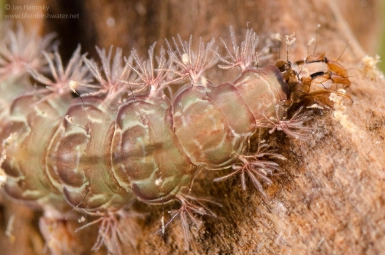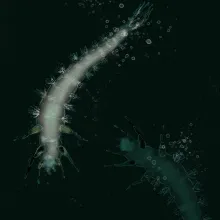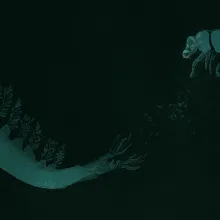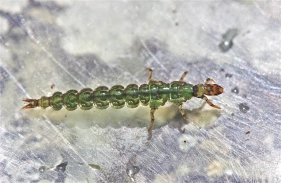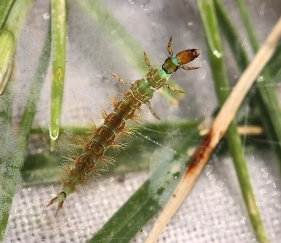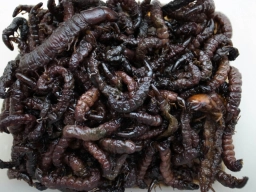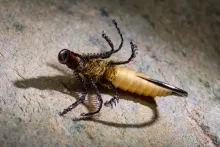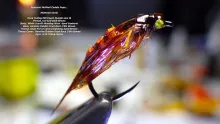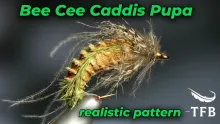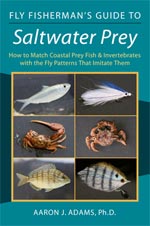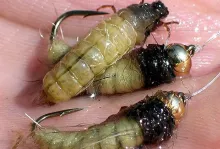Some say that caddisflies are even more important than mayflies. For us flyfishers that is probably correct. A good caddis pattern can save your day.
The caddises form an important part of the diet of the trout. The order Trichoptera is a groups of insects with aquatic larvae and terrestrial adults. There are approximately 14,500 species described, but many more species remain to be described.
Trichoptera is one of the oldest inhabitants of our planet. They appeared about 300-350 million years ago and lived in the era of the trilobites. The origin of the word "caddis" is unclear, but it dates back to at least as far as Izaak Walton's 1653 book "The Compleat Angler”, where "cod-worms or caddis" were mentioned as being used as bait.
Caddisflies are also called Sedges by anglers – or just caddises or simply caddis.
Sedges go through a complete metamorphosis, which means four stages – egg, larva, pupa, adult. The life cycle lasts an average of one year, but some species produce new generations every six months. For others it takes up to two years.
While fishing, imitating the adult with a dry fly is probably the most common, but the larval stage and pupae actually have a much bigger impact on the trout life. In this article I will focus on larvae, specifically the green ones.
Most caddisfly larvae live in cases they build out of sand, twigs, leaf pieces, and any other debris. While some of these are green in color, few trout ever see the "naked” cased larvae, just perhaps during the molts between the five to seven larval stages. Also during the struggle of building a new case, the larva can get whisked off the bottom and into the water column.
Some larvae use green algae and coil the filaments into a solidified silken structure. Many other elements like sheared pieces of freshwater sponge and other aquatic vegetation, also green in color, can be observed in caddisfly architecture. So some of those can be classified as a green caddises.
But when using the term "green caddis”, we usually think of free-living larvae. Those that don’t build housings.
For us there are two important genera of green "free-livers”.
First there is the net-spinning families of which Hydropsychidae are most abundant.
Second there’s a large and primitive group called Rhyacophilidae aka "green rock worms”.
Both of these groups are especially prone to drifting, making them an important year-round food source for the trout. Trout can pluck them off vegetation, or catch them during their daily behavioral drift. This drift happens around midday or during the night, depending on the species.
|
|
|
|
Rhyacophilidae - caseless caddis - green rock worm
Rhyacophila is the most diverse genus of all the caddisflies. It consists of around 700 species worldwide.
The larvae are large and some species can be more then 25 millimeters or an inch long. The color varies in various shades of green, but most have bright green bodies. They don't build cases or nets and mostly predate on other insect larvae and nymphs. They are widely distributed, but the habitat is limited to fast and cold streams, riffles and mountain streams. Their love of cold waters doesn’t eliminate them from low elevation rivers, but their presence and importance is less significant here. They are usually most abundant from 800 meters above sea level and higher.
When ready to pupate, the larvae crawl into a crack between some cobble in a riffle and cover themselves with small pieces of gravel, forming a rough but closed shelter. Here they remain for four to six weeks while the larvae molt into pupae and the pupae mature. The pupae break out of the shelter, swim up quickly and emerge on the surface.
Hydropsychidae - net-spinning caddis
Hydropsychids are extremely widespread and abundant in well-oxygenated rivers and streams, being up to 1,000 individuals per square meter!
These caddisflies are common in most of the world's streams. It is the dominant family of net-spinning caddis.
The color of the larvae of many species is brown or dark olive-brown, but many other species are olive to bright green. A final stage larva will measure from 15-20 millimeters in length. Two genera of Hydropsychidae are of particular importance: Hydropsyche and Cheumatopsyche.
They construct dwellings known as "retreats", which are fixed to the sides of rocks. These retreats are typically composed of collected plant and mineral fragments. At the large open end of their retreats, the animals construct spider-like webs of silk. The webs effectively strain food like algae, small crustaceans, zooplankton, and small insects. The inhabitants consume much vegetable matter, such as algae and plant fragments. They are also recorded to be cannibalistic, eating very early stages of their own species. Hydropsychids require moderate to fast riffles, to make sure food items come into their nets.
Net-spinning caddis pupate in their shelters on the sides or undersides of rocks, very similar to green rock worms. After four to five weeks of pupation the pupae escape and swim to the surface where the adults emerge.
Green rock worms or net-spinning caddis?
All species of Hydropsychidae larvae have well developed tufts of gills along the underside of their abdomens. In contrast, most species of Rhyacophilidae have no gills at all, and rely on absorbing oxygen from the water through their skin.
Those members of the Rhyacophila genus that do have gills, do not have them along the underside of the abdomen but rather on the sides. The same holds true for the pupae.
Fishing
Exact identification of the caddis species is rarely necessary for the angler. Several caddis patterns will cover the various species. The patterns can be the same for all Green Caddis Larvae, as long as you match the size and color closely and fish it correctly.
Fly patterns for net-spinning caddis should usually be tied on hook sizes #14 to 12. For the green rock worm patterns, use hook size #12 to 10.
The larvae of Rhyacophila may rappel between the rocks on a line of brown silk they secrete. This can be imitated by coloring the last foot or so of one's leader with a brown marker.
The larvae are incapable of swimming. Some will just thrash back and forth when dislodged in the current, so fish the flies dead-drift, short or long distance nymphing, Czech or Euro nymphing, French or New Zealand style nymph fishing or fished under indicator. You can use your personal preference.
In Japan
In Japan the caddisfly (and stonefly) larvae is called "Zazamushi” and eaten as a delicacy. The name "Zazamushi” literally translates to "insects” (mushi) that live in a place where the river makes the sound "zaazaa” as it flows.
Popular names
Many of the caddis species have their own angling name. Here are some of the green larvae:
Great Gray Spotted Sedge: Arctopsyche grandis (Important in the Northwest)
Little Sister Caddis: Cheumatopsyche species
Spotted Sedges (US), Grey Flag, Marble Sedge, Small Brown Sedge (UK): Hydropsyche species
Green Sedges: Rhyacophila species
Little Black Caddisflies: Brachycentrus genus (cased)
Summer Flier Sedge: Limnephilus (cased)
Pattern videos
YouTube Playlist for "Green Caddis Larvae" patterns
Credits
Author: Břetislav Kašpar
Illustration: Tereza Ščerbová
Photos: Jan Hamrský + Wikipedia
- Log in to post comments



